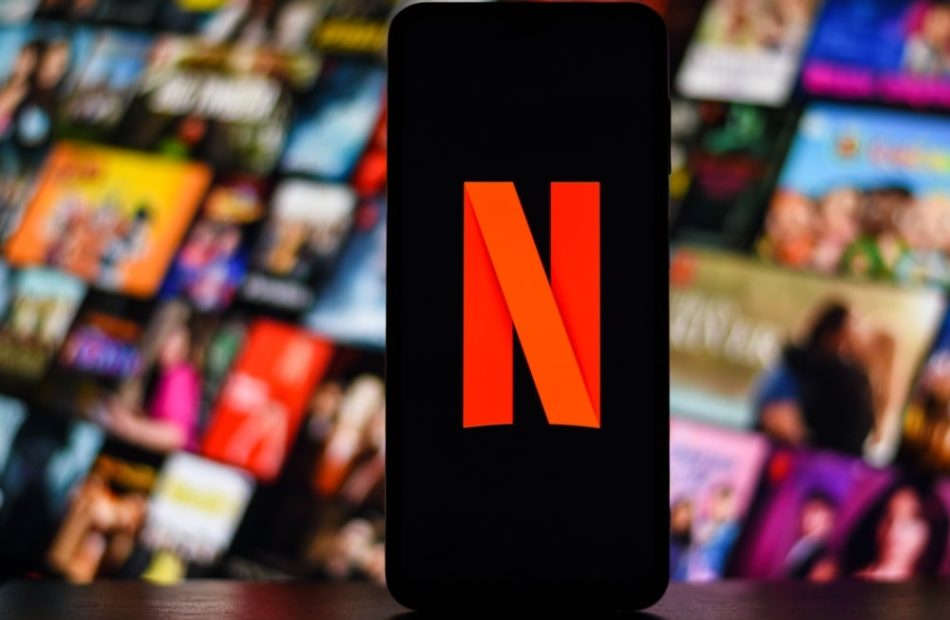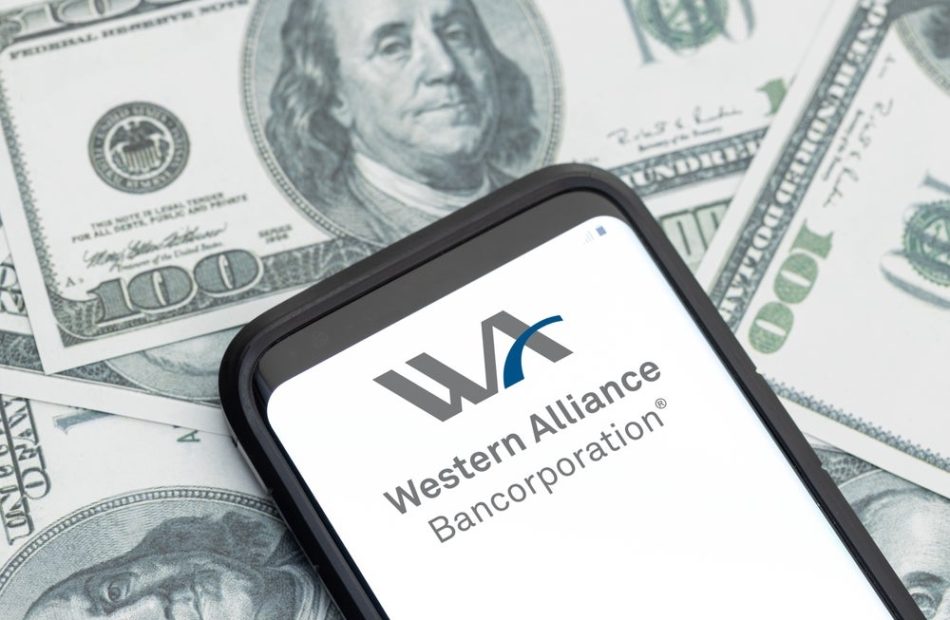Apple's new iPhone sales in China jump 20% in first 3 weeks, Counterpoint says
BEIJING (Reuters) – Apple Inc’s new iPhones got off to a strong start in China, with their sales rising 20% in their first three weeks since their launch compared with its 2023 model, according to data from research firm Counterpoint.
Both Apple and Huawei’s latest smartphones went on sale in China on Sept. 20, underscoring intensifying competition in the world’s biggest smartphone market where the U.S. firm has been losing market share in recent quarters to domestic rivals.
“We’re seeing strong iPhone 16 series unit sales in China,” Counterpoint said, adding the iPhone 16 Pro and Pro Max models were doing particularly well, with their combined sales rising 44% compared with their equivalent 2023 versions.
Overall iPhone unit sales in China, however, dropped 2% year on year during the three-week period because of decreased sales of older models and increased competition with Huawei’s Mate and Pura series, it said.
(Reporting by Yelin Mo and Miyoung Kim; Editing by Muralikumar Anantharaman)
Netflix Q3 Earnings: Revenue Beats, EPS Tops, Q4 Guidance Projects Subscriber Boost From 'Squid Game,' NFL, And Boxing
Streaming giant Netflix Inc NFLX reported third-quarter financial results after market close Thursday.
Here are the key highlights.
What Happened: Netflix reported third-quarter revenue of $9.825 billion, up 15% year-over-year. The revenue total beat a Street consensus estimate of $9.769 billion according to data from Benzinga Pro.
The company reported earnings per share of $5.40 in the third quarter, beating a Street consensus estimate of $5.12.
Netflix ended the third quarter with 282.72 million global paid subscribers, up 14.4% year-over-year. The company added 5.07 million new paid subscribers in the quarter, compared to 8.8 million net paid subscribers added in last year’s third quarter.
The company said average revenue per member was flat on a year-over-year basis in the third quarter.
Revenue was up 16% year-over-year in the UCAN region. Revenue in the EMEA region was up 16% year-over-year. LATAM revenue was up 9% year-over-year.
The company said engagement remained strong in the third quarter. Through the first nine months of the year, view hours per member are up year over year. Engagement averages around two hours per day per paid membership.
Netflix said ad-supported plan membership was up 35% quarter-over-quarter in the third quarter. The company’s ad-tech platform is “on track to launch” in the fourth quarter in Canada and other territories in 2025.
“Our ads plan allows us to offer a lower price point for consumers, which is proving to be popular,” the company said.
Netflix said the ad-supported plan represented over 50% of new sign-ups in the third quarter.
“Our members rely on Netflix to entertain them, and we want to be the first place they go for entertainment.”
What’s Next: Netflix is guiding for fourth-quarter revenue to be $10.128 billion, up 14.7% year-over-year. The company’s earnings per share guidance calls for the fourth quarter total to be $4.23, compared to $2.11 in last year’s fourth quarter.
Netflix said the ad-supported plan efforts are still early and will take time to build out as a revenue stream.
“We’re on track to reach what we believe to be critical ad subscriber scale for advertisers in all of our ads countries in 2025, creating a strong base from which we can further increase our ad membership in 2026 and beyond,” the company said.
The company highlighted upcoming fourth-quarter content, including the boxing match between Jake Paul and Mike Tyson, a second season of “Squid Game”, and two National Football League games on Christmas.
“As we look ahead to 2025, we’re focused on improving every aspect of our service and continuing to deliver healthy revenue and profit growth.”
Due to seasonality and the strong content slate, fourth-quarter paid net additions are expected to be higher than the third-quarter total.
Netflix expects 2025 revenue to range from $43 billion to $44 billion.
NFLX Price Action: Netflix stock is up 4% to $715.37 in after-hours trading Thursday, versus a 52-week trading range of $344.73 to $736.00.
Read Next:
Photo courtesy of Netflix.
Market News and Data brought to you by Benzinga APIs
© 2024 Benzinga.com. Benzinga does not provide investment advice. All rights reserved.
Sold Out Before Hitting Shelves: Why Did AYR Wellness Snatch Up This Local Cannabis Brand?
Can a cannabis brand go from a garage startup to an acquisition by a multi-state operator in a few years? LEVIA did exactly that. What began as an experiment in cannabis tinctures, brewed above a Massachusetts garage, quickly became one of the state’s top-selling cannabis beverage brands—selling out before their products even hit the shelves.
For cannabis investors, the LEVIA story isn’t just a tale of entrepreneurial grit; it’s a roadmap to success in a rapidly growing sector. By focusing on a unique, effects-based product and seizing an untapped opportunity in the market, founders Kristin and Eric Rogers scaled their startup into a high-demand brand that caught the attention of AYR Wellness.
- Get Benzinga’s exclusive analysis and the top news about the cannabis industry and markets daily in your inbox for free. Subscribe to our newsletter here. You can’t afford to miss out if you’re serious about the business.
Can Cannabis Be More Than Smoking?
Before LEVIA was a household name in the Massachusetts cannabis scene, it was a small venture operating out of the Rogers’ garage. Kristin, a substance abuse therapist and Eric, a brand marketer, both saw the potential for cannabis to change lives, particularly as an alternative to harmful substances like alcohol and opioids.
Their journey began with a simple question: How do we create a cannabis product that doesn’t require smoking?
“My husband started making tinctures using medicinal cannabis, and we realized very quickly this was a thing,” Kristin said. “We also picked strains. Eric found medicinal strains that were very specific on what their purpose was.”

Their mission was clear: to create consistent, reliable cannabis products that mirrored the predictability of alcohol consumption. LEVIA’s first tinctures were alcohol-based, but, they wanted to move away from alcohol-based products.
“We wanted to help people use cannabis without having to smoke it, and at the same time, we wanted to provide something that could compete with alcohol,” Kristin told Benzinga. “The idea was to create a product where you know how you’re going to feel, just like when you drink a glass of wine.”
Enter The Beverage Market: Scaling The Dream
As LEVIA grew, so did the need for a larger, more sophisticated operation. They raised money “on hopes and dreams” and managed to retrofit a brewery in Georgetown, Massachusetts where they could produce their products on a much larger scale.
Their hard work paid off. LEVIA’s cannabis seltzers, known for their fast onset, zero calories and zero sugar, quickly captured the attention of consumers. The brand introduced three signature lines—Achieve, Celebrate and Dream—each tailored to specific consumer needs. “We realized early on that no one was doing effects-based drinks,” Kristin says.
Building A Brand: Crafting The Perfect Lineup
When it came time to brand their products, Kristin and Eric honed in on a clean, apothecary-style look, something that conveyed quality and care. But the branding was only one piece of the puzzle. LEVIA’s real breakthrough came in narrowing its product line to three drinks. The rationale? Simplicity, clarity and targeting a broad range of consumer needs.

“We started by picking specific strains but quickly realized we couldn’t guarantee the same strain every time. So we focused on what most people want to feel.” Kristin said.
Clean Extraction: LEVIA’s Full-Spectrum Advantage
LEVIA’s success is rooted in its full-spectrum products, which contain all the naturally occurring compounds from the cannabis plant—THC, CBD, CBG and terpenes—creating an enhanced “entourage effect” for a more balanced experience.
Using CO2 extraction, one of the cleanest methods, LEVIA ensures its products are potent and pure. This process preserves the plant’s natural compounds without leaving harmful solvents. As Kristin puts it, “We’re chasing the closest thing we can get to smoking, but without the smoke.”
It’s A Match!
Within just six months of launching, LEVIA’s success was undeniable. The brand’s beverages were selling out before they even hit the shelves. This rapid growth caught the attention of larger players in the cannabis space, including multi-state operator AYR Wellness AYRWF.
“We were ranked first or second nationally, even though we were only in Massachusetts,” Kristin said. “AYR had the largest footprint of the companies that approached us, and we saw it as an opportunity to scale.”
Since the acquisition, Kristin has remained with the company, learning from the broader operations at AYR. “I’ve learned so much about different parts of the business that I wouldn’t have had the chance to before. It’s been an exciting journey.”
Read Also: X-Rays, Microwaves And Now What? This Company Freezes Weed At -320°F To Kill Mold And Save A Ton
Passion, Innovation, Persistence
For other cannabis entrepreneurs looking to make their mark in an increasingly competitive market, Kristin offers some valuable advice. “Be an expert in what you do and approach it with passion. Right now, MSOs [multi-state operators] aren’t looking for the same old thing. They want better products or new ways for people to enjoy cannabis.”
Today, LEVIA continues to lead in the cannabis beverage market, with plans to expand beyond Massachusetts.

The brand’s popular tinctures have already made their way to states like Florida and Nevada, and Kristin is particularly excited about entering New Jersey. “There’s a camaraderie between Massachusetts and New Jersey, and I’m most looking forward to getting our drinks there next.”
As for the immediate future, LEVIA has launched its Blood Orange seltzer, a limited-edition flavor timed for Halloween. “We wanted to do something seasonal, and people love the orange flavor. It’s been a hit already,” Kristin said.
Read Next: Transforming A 5,000-Year-Old Craft: How Weed Companies Use Data To Make Hash Without Losing Its Art
© 2024 Benzinga.com. Benzinga does not provide investment advice. All rights reserved.
Nexus Industrial REIT Announces Third Quarter Results Date, and November and December Distributions
TORONTO, Oct. 17, 2024 (GLOBE NEWSWIRE) — Nexus Industrial REIT (“Nexus” or the “REIT”) NXR announced today that it intends to release its financial results for the quarter ended September 30, 2024, before the opening of the TSX on November 12, 2024.
Management of the REIT will host a conference call at 10:00 AM Eastern Standard Time on Tuesday November 12, 2024, to review the financial results and operations.
To participate in the conference call, please dial 647-484-8814 or 1-844-763-8274 (toll free in Canada and the US) at least five minutes prior to the start time and ask to join the Nexus Industrial REIT conference call.
A recording of the conference call will be available until December 12, 2024. To access the recording, please dial 1-412-317-0088 or 1-855-669-9658 (toll free in Canada and the US) and enter access code 7467865.
November and December Distributions
The REIT will make a cash distribution in the amount of $0.05333 per unit, representing $0.64 per unit on an annualized basis, payable December 13, 2024, to unitholders of record as of November 29, 2024.
The REIT will also make a cash distribution in the amount of $0.05333 per unit, representing $0.64 per unit on an annualized basis, payable January 15, 2025, to unitholders of record as of December 31, 2024.
About Nexus Industrial REIT
Nexus is a growth-oriented real estate investment trust focused on increasing unitholder value through the acquisition of industrial properties located in primary and secondary markets in Canada and the ownership and management of its portfolio of properties. The REIT currently owns a portfolio of 111 properties (including one properties held for development in which the REIT has an 80% interest) comprising approximately 13.0 million square feet of gross leasable area. The REIT has approximately 94,159,000 voting units issued and outstanding, including approximately 70,749,000 REIT Units and approximately 23,410,000 Class B LP Units of subsidiary limited partnerships of Nexus, which are convertible to REIT Units on a one-to-one basis.
For further information please contact:
Kelly C. Hanczyk, CEO at (416) 906-2379; or
Mike Rawle, CFO at (647) 823-1381.

Market News and Data brought to you by Benzinga APIs
© 2024 Benzinga.com. Benzinga does not provide investment advice. All rights reserved.
Hedge Fund Billionaire Daniel Loeb Bets On Trump Win, Singles Out This Recent Buy As Having 'Significant Upside Potential'
Another billionaire investor is rooting for Republican presidential candidate Donald Trump’s victory in the Nov. 5 election and has accordingly positioned his portfolio. The call comes on the heels of former hedge fund manager Stanley Druckenmiller‘s similar prediction.
What’s In Store In Political Arena: “We believe that the likelihood of a Republican victory in the White House has increased, which would have a positive impact on certain sectors and the market overall,” said hedge fund Third Point founder and CEO Daniel Loeb said in the firm’s third-quarter investor letter.
The hedge fund manager said the “America First” tariffs will increase domestic manufacturing, infrastructure spending, and prices of certain materials and commodities. He also said a potential reduction in regulation in the activist antitrust stance of the Biden-Harris administration would unleash productivity and a wave of corporate activity.
“Accordingly, we have increased certain positions that could benefit from such a scenario via both stock and option purchases and continue to shift our portfolio away from companies that will not,” the hedge fund manager said. A study of Senate races will likely see Republicans establishing a majority, thus precluding a “Blue Sweep” if Kamala Harris wins the race to the White House, according to the hedge-fund manager.
He warned of a “Blue sweep” theoretically ushering in crushing taxes, stifling regulations, and a headwind to
growth.
See Also: What Are Cyclical Stocks
Economic Outlook: Loeb reassured investors regarding the economy. “In the economy, we see no evidence of recession, slowing inflation, and a real interest rate that still needs to come down,” he said.
The hedge fund manager also sees healthy consumer spending, and active levels of individual investing, providing a liquidity backdrop to sustain market levels. The setup is good for event-driven investing, he said, adding that “the potential for risk arbitrage transactions and corporate activity could usher in a golden age for the strategy.”
Third Point’s Q3 Winners & Losers: Third Point Offshore Fund generated a return of 3.9%, taking the annualized net returns to 13.1%. The third-quarter returns of the fund, however, paled before the S&P 500’s 5.9% gain and the MSCI World Index’s 6.5% rise.
Loeb noted that the global market gains continued in the third quarter but the rally broadened out in the quarter, with the Magnificent 7 trailing the broader market for the first time since the fourth quarter of 2022. Rate-sensitive stocks and cyclicals outperformed as the market looked ahead to the easing cycle, he added.
The top gainers and decliners of the fund are as follows:
Gainers
- Privately-held R2 Semiconductor
- PG&E Corporation’s PCG Pacific Gas and Electric Company subsidiary
- Utility Vistra Corp. VST
- KB Home KBH
- Lifesciences and diagnostics company Danaher Corporation DHR
Losers:
- Bath & Body Works, Inc. BBWI
- Amazon.com, Inc. AMZN
- Advance Auto Parts, Inc. AAP
- Alphabet Inc. GOOG GOOGL
- Microsoft Corporation MSFT
Loeb also said his fund initiated a position in Danish freight forwarder DSV. “We believe DSV can earn more than 100 DKK per share in 2027 and see significant upside for one of Europe’s best companies,” he said.
The SPDR S&P 500 ETF Trust SPY, an exchange-traded fund that tracks the performance of the S&P 500 Index, traded up 0.25% to $583.78 in premarket trading on Friday, according to Benzinga Pro data.
Read Next:
Image via Flickr
Market News and Data brought to you by Benzinga APIs
© 2024 Benzinga.com. Benzinga does not provide investment advice. All rights reserved.
Waymo Co-founder Says Tesla Has An Advantage In Race To Autonomous Driving: 'I'd Rather Be In Tesla's Shoes Than In Waymo's Shoes'
Alphabet Inc. (NASDAQ:GOOG) (NASDAQ:GOOGL) subsidiary Waymo’s co-founder Anthony Levandowski is more optimistic about Tesla Inc.’s (NASDAQ:TSLA) self-driving vision over Waymo’s given the EV giant’s wealth of data.
What Happened: “There’s millions of Teslas out there that are constantly alerting, feeding back their data to Tesla to make the product better, and that’s ultimately what’s really going to be the differentiator here — that you have the richest, most consistent data to continuously improve over time,” Levandowski said in an interview with Business Insider.
“I’d rather be in Tesla’s shoes than in Waymo’s shoes.”
Don’t Miss:
Tesla uses camera footage from its existing fleet of vehicles to train its software aimed at enabling autonomous driving. Tesla’s fleet is significantly large and operates across the country as compared to Waymo which is only operating vehicles in a select few cities within the U.S. such as Phoenix and San Francisco.
Tesla, therefore, likely has much more data than Waymo across scenarios of driving to train its tech, the Waymo co-founder opined.
See Also: A billion-dollar investment strategy with minimums as low as $10 — you can become part of the next big real estate boom today.
Why It Matters: Tesla unveiled its dedicated robotaxi offerings last week at an event in Los Angeles. The company unveiled two products – a two-seater Cybercab and a 20-seater Robovan with no steering wheels or pedals. The Cybercab, Tesla CEO Elon Musk said, will enter production “before 2027.”
Waymo, meanwhile, already operates robotaxis in select cities. The company deploys its sensor suite on vehicles manufactured by other automakers, such as Jaguar vehicles, for use as robotaxis, which by itself is a cost-extensive process.
“You probably need to buy a car company to be able to produce the cars that you want,” Levandowski reportedly said regarding Waymo. He left Waymo in 2016 after co-founding it in 2009.
Check out more of Benzinga’s Future Of Mobility coverage by following this link.
Read More:
Photos courtesy: Tesla and Shutterstock
UNLOCKED: 5 NEW TRADES EVERY WEEK. Click now to get top trade ideas daily, plus unlimited access to cutting-edge tools and strategies to gain an edge in the markets.
Get the latest stock analysis from Benzinga?
This article Waymo Co-founder Says Tesla Has An Advantage In Race To Autonomous Driving: ‘I’d Rather Be In Tesla’s Shoes Than In Waymo’s Shoes’ originally appeared on Benzinga.com
Netflix's 200B Hour Problem: Why Live Sports Are Just A Drop In the Streaming Ocean
In its third-quarter earnings call on Thursday, Netflix Inc NFLX executives shed light on their calculated approach to live sports programming, acknowledging that while their upcoming slate of live events—including the Jake Paul–Mike Tyson fight and NFL Christmas Day game—might seem minimal against their staggering 200 billion annual streaming hours, the strategy focuses on high-impact moments rather than volume.
What Happened: “We have about 200 billion hour every year on Netflix. Very few of them are actually live, but they all promise to be extremely high value,” said Ted Sarandos, Netflix’s Co-CEO, during the company’s earnings call. “Thankfully, all hours are not created equal.”
The streaming giant’s selective entry into live programming marks a significant shift from its traditional on-demand model, though executives stress this isn’t about competing with traditional sports broadcasters. Instead, Netflix aims to capture “the excitement that comes when the whole world gets together to watch something,” according to Sarandos.
The company’s live programming strategy includes:
- The highly anticipated Jake Paul vs. Mike Tyson boxing match
- NFL football on Christmas Day
- Weekly WWE programming starting January 2025
- Live comedy specials, including a new John Mulaney show
Despite these high-profile additions, Netflix maintains its core focus on scripted and unscripted content, which drives the vast majority of its viewing hours. The platform reports approximately two hours of viewing per member per day, with engagement per household increasing through the first three quarters of 2024.
Greg Peters, Co-CEO, emphasized the strategic value of live events in the broader content mix. “Those should be exciting things,” Peters noted, positioning live programming alongside games and traditional content as part of Netflix’s expanding entertainment offering.
Why It Matters: The approach reflects a broader industry trend of streaming services selectively entering the live sports market, though Netflix’s strategy appears more measured than competitors like Amazon.com Inc.’s AMZN Prime Video and Apple Inc AAPL TV+, which have made substantial investments in regular season sports rights.
Netflix’s current engagement metrics suggest the company’s selective approach to live programming may be working. With subscriber engagement remaining strong and revenue growth projected at 11-13% for 2025, the company appears confident in its strategy of prioritizing high-impact live events over volume.
“The contributor to growing engagement is going to be across the board on our scripted and unscripted or documentary programming,” Sarandos explained, suggesting live programming will complement rather than drive the company’s core content strategy.
As Netflix projects revenue of $43-44 billion for 2025, its approach to live programming offers a glimpse into how the streaming giant plans to maintain growth while selectively expanding into new content territories.
Price Action: Netflix Inc. closed at $687.65 on Thursday, down 2.04%. In after-hours trading, the stock rose by 5.03%. Year to date, Netflix has surged 46.78%, according to data from Benzinga Pro.
Read Next:
Image Via Shutterstock
Disclaimer: This content was partially produced with the help of AI tools and was reviewed and published by Benzinga editors.
Market News and Data brought to you by Benzinga APIs
© 2024 Benzinga.com. Benzinga does not provide investment advice. All rights reserved.
Prices Have Decreased Year Over Year In More Than Half Of The 50 Largest Markets – Which Cities Made The List?
Home prices are declining across many of America’s largest real estate markets, with Miami leading the downturn. Median listing prices dropped 12.4% from the previous year.
According to new data from Realtor.com’s September Housing Market Report, the shift toward more affordable housing is spanning “coast to coast,” with price declines hitting markets from San Francisco to Cincinnati.
The cooling trend is coming even as mortgage rates climb following their dip last month.
Don’t Miss:
Nationwide, the median home listing price fell to $425,000, marking a 1% decrease from two years ago. However, Realtor.com economist Joel Berner said there is some nuance in the data. “The median price per square foot grew by 2.3%, indicating that the inventory of smaller and more affordable homes continues to grow in share,” Berner said.
See Also: This Jeff Bezos-backed startup will allow you to become a landlord in just 10 minutes, and you only need $100.
Florida markets dominate the list of price declines, with four cities among the top ten that Realtor tracked. Miami tops the list with its 12.4% drop to $525,000, followed by Tampa (-5.5% to $414,948) Orlando (-5.6% to $429,950) and Jacksonville (-6.1% to $399,000).
Robert Washington, owner of St. Petersburg-based Savvy Buyers Realty, said Florida’s market correction results are due to post-pandemic factors. “Remote work trend certainly played a role, but I think many of the people that have come to Florida were more focused on the benefits of no state income tax as well as political ideologies,” he told Realtor.
Trending: Warren Buffett once said, “If you don’t find a way to make money while you sleep, you will work until you die.” These high-yield real estate notes that pay 7.5% – 9% make earning passive income easier than ever.
Beyond Florida, price drops are hitting major metropolitan areas across multiple regions. Cincinnati saw the second-largest decline at 9.5%, bringing its median listing price to $337,000. San Francisco followed with an 8.9% decrease to $997,500, while Kansas City’s prices fell 8.4% to $389,500.
Other once-hot markets seeing price drops include Austin (-6.6% to $520,000), Denver (-6% to $610,250) and Nashville (-5.4% to $547,865).
See Also: This billion-dollar fund has invested in the next big real estate boom, here’s how you can join for $10.
The trend departs from June 2023’s record-high median price of $445,000. While it represents potential relief for buyers who have faced severe affordability challenges, some markets like Miami still maintain prices well above pre-pandemic levels, with median listings 50% higher than 2019 figures.
However, the widespread price moderation, affecting more than half of the nation’s 50 largest markets, signals a possible transition toward improved buyer conditions despite ongoing challenges with elevated mortgage rates.
Read Next:
Market News and Data brought to you by Benzinga APIs
© 2024 Benzinga.com. Benzinga does not provide investment advice. All rights reserved.
Western Alliance Stock Dips After Q3 Results: Here's Why
Western Alliance Bancorporation WAL shares are trading lower after the company reported its third-quarter financial results after Thursday’s closing bell. Here’s a look at the details from the report.
The Details: Western Alliance reported quarterly earnings of $1.80 per share, which missed the analyst consensus estimate of $1.89. Quarterly revenue came in at $823.1 million, which beat the analyst consensus estimate of $808.19 million.
- Net interest income totaled $696.9 million in the third quarter 2024, an increase of $40.3 million, or 6.1%, from $656.6 million in the second quarter 2024, and an increase of $109.9 million, or 18.7%, compared to the third quarter 2023.
- Non-interest income was $126.2 million for the third quarter 2024, compared to $115.2 million for the second quarter 2024, and $129.2 million for the third quarter 2023.
- Net interest margin in the third quarter 2024 was 3.61%, a decrease from 3.63% in the second quarter 2024, and a decrease from 3.67% in the third quarter 2023.
- The company recorded a provision for credit losses of $33.6 million in the third quarter 2024, a decrease of $3.5 million from $37.1 million in the second quarter 2024, and an increase of $21.5 million from $12.1 million in the third quarter 2023.
Read Next: JPMorgan Launches Private Client Tier To Attract ‘Affluent’ Customers
“Western Alliance delivered solid third-quarter results featuring strong net interest income growth, continued loan and deposit momentum, and healthy earnings generation,” said Kenneth A. Vecchione, CEO of Western Alliance.
“Quarterly loan and deposit growth of $916 million and $1.8 billion, respectively, continued their upward trajectory and produced PPNR1 of $285.7 million. Asset quality remained stable with our nonperforming assets to total assets ratio declining to 0.45% and net loan charge-offs of 0.20% of average loans,” Vecchione added.
WAL Price Action: According to Benzinga Pro, Western Alliance shares are down 5.24% after-hours at $89 at the time of publication Thursday.
Read Also:
Photo: Shutterstock
Market News and Data brought to you by Benzinga APIs
© 2024 Benzinga.com. Benzinga does not provide investment advice. All rights reserved.
BANCFIRST CORPORATION REPORTS THIRD QUARTER EARNINGS
OKLAHOMA CITY, Oct. 17, 2024 /PRNewswire/ — BancFirst Corporation (NASDAQ GS:BANF) reported net income of $58.9 million, or $1.75 per diluted share, for the third quarter of 2024 compared to net income of $51.0 million, or $1.52 per diluted share, for the third quarter of 2023.
The Company’s net interest income for the third quarter of 2024 increased to $115.0 million from $104.3 million for the same period in 2023. Loan volume was the primary driver of the change in net interest income, but was partially offset by the impact of the shifting mix between interest-bearing and noninterest-bearing deposits. Net interest margin for the three-month period ended September 30 was 3.78% in 2024 compared to 3.73% in 2023. The Company recorded a provision for credit losses of $3.0 million in the third quarter of 2024 compared to $2.3 million for the same period in 2023.
Noninterest income for the quarter totaled $48.7 million compared to $44.4 million last year. Trust revenue, treasury income, sweep fees and insurance commissions each increased when compared to third quarter last year.
Noninterest expense for the quarter increased to $86.7 million compared to $81.2 million in the same quarter last year. The increase in noninterest expense was primarily related to growth in salaries and employee benefits of $4.0 million.
The Company’s effective tax rate for the period was 20.3% compared to 21.8% for the third quarter of 2023.
At September 30, 2024, the Company’s total assets were $13.3 billion, an increase of $941.4 million from December 31, 2023. Loans grew $528.1 million from December 31, 2023, totaling $8.2 billion at September 30, 2024. Deposits totaled $11.5 billion, an increase of $774.2 million from year-end 2023. Sweep accounts totaled $4.3 billion at September 30, 2024, down $60.6 million from December 31, 2023. The Company’s total stockholders’ equity was $1.6 billion, an increase of $150.7 million over December 31, 2023.
Nonaccrual loans totaled $45.5 million, representing 0.56% of total loans at September 30, 2024 compared to 0.32% at year-end 2023. The allowance for credit losses to total loans was 1.24% at September 30, 2024 compared to 1.26% at the end of 2023. Net charge-offs were $775,000 for the quarter compared to $1.5 million for the third quarter of 2023.
BancFirst Corporation CEO David Harlow commented, “Loan growth, an improved net interest margin, and growth across all major components of non-interest income resulted in a strong quarter for the Company. While the Federal Reserve’s late September 50 basis point rate cut had little impact on the quarter, the potential for further short-term rate reductions combined with a recent increase in the longer-term portion of the yield curve changes the landscape considerably and causes our outlook on net interest margin to be unclear. However, we believe the Company is well positioned to reasonably manage and balance our asset and liability pricing in the coming months. Our perspective on credit is unchanged as the Federal Reserve’s goal of a “soft landing,” while more likely, is far from certain, thus our Loan Loss Reserve as a percentage of loans is the same when compared to last quarter.”
BancFirst Corporation (the Company) is an Oklahoma based financial services holding company. The Company operates three subsidiary banks, BancFirst, an Oklahoma state-chartered bank with 104 banking locations serving 59 communities across Oklahoma, Pegasus Bank, a Texas state-chartered bank with three banking locations in the Dallas Metroplex area and Worthington Bank, a Texas state-chartered bank with three locations in the Fort Worth Metroplex area, one location in Arlington Texas and one location in Denton Texas. More information can be found at www.bancfirst.bank.
The Company may make forward-looking statements within the meaning of Section 27A of the securities Act of 1933 and Section 21E of the Securities Exchange Act of 1934 with respect to earnings, credit quality, corporate objectives, interest rates and other financial and business matters. Forward-looking statements include estimates and give management’s current expectations or forecasts of future events. The Company cautions readers that these forward-looking statements are subject to numerous assumptions, risks and uncertainties, including economic conditions, the performance of financial markets and interest rates, legislative and regulatory actions and reforms, competition, as well as other factors, all of which change over time. Actual results may differ materially from forward-looking statements.
|
BancFirst Corporation |
||||||||||
|
Summary Financial Information |
||||||||||
|
(Dollars in thousands, except per share and share data – Unaudited) |
||||||||||
|
2024 |
2024 |
2024 |
2023 |
2023 |
||||||
|
3rd Qtr |
2nd Qtr |
1st Qtr |
4th Qtr |
3rd Qtr |
||||||
|
Condensed Income Statements: |
||||||||||
|
Net interest income |
$ 114,957 |
$ 109,896 |
$ 106,104 |
$ 105,066 |
$ 104,308 |
|||||
|
Provision for credit losses |
3,031 |
3,358 |
4,015 |
– |
2,312 |
|||||
|
Noninterest income: |
||||||||||
|
Trust revenue |
5,672 |
5,490 |
5,088 |
5,106 |
4,866 |
|||||
|
Service charges on deposits |
17,723 |
17,280 |
16,428 |
16,841 |
17,027 |
|||||
|
Securities transactions |
(308) |
317 |
(267) |
(1,364) |
(361) |
|||||
|
Sales of loans |
721 |
733 |
491 |
512 |
734 |
|||||
|
Insurance commissions |
9,391 |
6,668 |
9,455 |
7,220 |
8,429 |
|||||
|
Cash management |
9,189 |
9,149 |
8,651 |
7,878 |
8,177 |
|||||
|
Other |
6,324 |
4,307 |
5,054 |
8,964 |
5,577 |
|||||
|
Total noninterest income |
48,712 |
43,944 |
44,900 |
45,157 |
44,449 |
|||||
|
Noninterest expense: |
||||||||||
|
Salaries and employee benefits |
54,215 |
51,928 |
51,528 |
50,731 |
50,200 |
|||||
|
Occupancy expense, net |
5,776 |
5,233 |
5,206 |
5,439 |
5,487 |
|||||
|
Depreciation |
4,482 |
4,504 |
4,556 |
4,560 |
4,685 |
|||||
|
Amortization of intangible assets |
886 |
887 |
886 |
887 |
885 |
|||||
|
Data processing services |
2,720 |
2,696 |
2,616 |
2,224 |
1,820 |
|||||
|
Net expense from other real estate owned |
2,751 |
1,656 |
2,202 |
7,870 |
2,720 |
|||||
|
Marketing and business promotion |
2,168 |
2,246 |
2,256 |
2,653 |
2,034 |
|||||
|
Deposit insurance |
1,645 |
1,614 |
1,438 |
1,332 |
1,419 |
|||||
|
Other |
12,091 |
14,552 |
12,091 |
14,120 |
11,965 |
|||||
|
Total noninterest expense |
86,734 |
85,316 |
82,779 |
89,816 |
81,215 |
|||||
|
Income before income taxes |
73,904 |
65,166 |
64,210 |
60,407 |
65,230 |
|||||
|
Income tax expense |
15,001 |
14,525 |
13,876 |
11,473 |
14,242 |
|||||
|
Net income |
$ 58,903 |
$ 50,641 |
$ 50,334 |
$ 48,934 |
$ 50,988 |
|||||
|
Per Common Share Data: |
||||||||||
|
Net income-basic |
$ 1.78 |
$ 1.53 |
$ 1.53 |
$ 1.48 |
$ 1.55 |
|||||
|
Net income-diluted |
1.75 |
1.51 |
1.50 |
1.46 |
1.52 |
|||||
|
Cash dividends declared |
0.46 |
0.43 |
0.43 |
0.43 |
0.43 |
|||||
|
Common shares outstanding |
33,122,689 |
33,022,124 |
32,966,678 |
32,933,018 |
32,921,393 |
|||||
|
Average common shares outstanding – |
||||||||||
|
Basic |
33,097,164 |
33,001,180 |
32,947,983 |
32,926,326 |
32,937,149 |
|||||
|
Diluted |
33,646,549 |
33,525,061 |
33,513,412 |
33,483,691 |
33,539,389 |
|||||
|
Performance Ratios: |
||||||||||
|
Return on average assets |
1.80 % |
1.61 % |
1.63 % |
1.58 % |
1.68 % |
|||||
|
Return on average stockholders’ equity |
15.14 |
13.72 |
13.96 |
13.98 |
14.93 |
|||||
|
Net interest margin |
3.78 |
3.76 |
3.70 |
3.67 |
3.73 |
|||||
|
Efficiency ratio |
52.99 |
55.46 |
54.82 |
59.79 |
54.60 |
|||||
|
BancFirst Corporation |
||||
|
Summary Financial Information |
||||
|
(Dollars in thousands, except per share and share data – Unaudited) |
||||
|
Nine months ended |
||||
|
September 30, |
||||
|
2024 |
2023 |
|||
|
Condensed Income Statements: |
||||
|
Net interest income |
$ 330,957 |
$ 319,390 |
||
|
Provision for credit losses |
10,404 |
7,458 |
||
|
Noninterest income: |
||||
|
Trust revenue |
16,250 |
13,678 |
||
|
Service charges on deposits |
51,431 |
60,526 |
||
|
Securities transactions |
(258) |
(464) |
||
|
Sales of loans |
1,945 |
2,095 |
||
|
Insurance commissions |
25,514 |
23,395 |
||
|
Cash management |
26,989 |
22,838 |
||
|
Other |
15,685 |
18,183 |
||
|
Total noninterest income |
137,556 |
140,251 |
||
|
Noninterest expense: |
||||
|
Salaries and employee benefits |
157,671 |
149,255 |
||
|
Occupancy expense, net |
16,215 |
15,588 |
||
|
Depreciation |
13,542 |
14,097 |
||
|
Amortization of intangible assets |
2,659 |
2,645 |
||
|
Data processing services |
8,032 |
6,144 |
||
|
Net expense from other real estate owned |
6,609 |
8,068 |
||
|
Marketing and business promotion |
6,670 |
6,461 |
||
|
Deposit insurance |
4,697 |
4,495 |
||
|
Other |
38,734 |
35,889 |
||
|
Total noninterest expense |
254,829 |
242,642 |
||
|
Income before income taxes |
203,280 |
209,541 |
||
|
Income tax expense |
43,402 |
46,010 |
||
|
Net income |
$ 159,878 |
$ 163,531 |
||
|
Per Common Share Data: |
||||
|
Net income-basic |
$ 4.84 |
$ 4.97 |
||
|
Net income-diluted |
4.76 |
4.88 |
||
|
Cash dividends declared |
1.32 |
1.23 |
||
|
Common shares outstanding |
33,122,689 |
32,921,393 |
||
|
Average common shares outstanding – |
||||
|
Basic |
33,015,741 |
32,916,996 |
||
|
Diluted |
33,567,117 |
33,493,015 |
||
|
Performance Ratios: |
||||
|
Return on average assets |
1.68 % |
1.81 % |
||
|
Return on average stockholders’ equity |
14.30 |
16.56 |
||
|
Net interest margin |
3.75 |
3.83 |
||
|
Efficiency ratio |
54.39 |
52.79 |
||
|
BancFirst Corporation |
||||||||||
|
Summary Financial Information |
||||||||||
|
(Dollars in thousands, except per share and share data – Unaudited) |
||||||||||
|
2024 |
2024 |
2024 |
2023 |
2023 |
||||||
|
3rd Qtr |
2nd Qtr |
1st Qtr |
4th Qtr |
3rd Qtr |
||||||
|
Balance Sheet Data: |
||||||||||
|
Total assets |
$ 13,313,482 |
$ 12,737,318 |
$ 12,602,425 |
$ 12,372,042 |
$ 12,114,602 |
|||||
|
Interest-bearing deposits with banks |
2,743,578 |
2,299,019 |
2,341,604 |
2,172,001 |
2,134,081 |
|||||
|
Debt securities |
1,376,913 |
1,441,365 |
1,534,651 |
1,555,095 |
1,525,448 |
|||||
|
Total loans |
8,188,202 |
8,054,856 |
7,787,857 |
7,660,134 |
7,476,474 |
|||||
|
Allowance for credit losses |
(101,882) |
(99,626) |
(97,267) |
(96,800) |
(97,776) |
|||||
|
Noninterest-bearing demand deposits |
3,858,670 |
3,815,818 |
3,849,807 |
3,982,226 |
4,170,550 |
|||||
|
Money market and interest-bearing checking deposits |
5,122,457 |
4,930,853 |
4,901,081 |
4,699,865 |
4,453,892 |
|||||
|
Savings deposits |
1,082,855 |
1,084,266 |
1,076,181 |
1,056,404 |
1,062,041 |
|||||
|
Time deposits |
1,410,370 |
1,184,665 |
1,082,552 |
961,627 |
847,688 |
|||||
|
Total deposits |
11,474,352 |
11,015,602 |
10,909,621 |
10,700,122 |
10,534,171 |
|||||
|
Stockholders’ equity |
1,584,575 |
1,512,492 |
1,469,312 |
1,433,891 |
1,370,584 |
|||||
|
Book value per common share |
47.84 |
45.80 |
44.57 |
43.54 |
41.63 |
|||||
|
Tangible book value per common share (non-GAAP)(1) |
41.91 |
39.83 |
38.56 |
37.50 |
35.56 |
|||||
|
Balance Sheet Ratios: |
||||||||||
|
Average loans to deposits |
72.27 % |
72.25 % |
71.97 % |
70.52 % |
70.61 % |
|||||
|
Average earning assets to total assets |
93.02 |
92.77 |
92.67 |
92.42 |
92.39 |
|||||
|
Average stockholders’ equity to average assets |
11.88 |
11.71 |
11.65 |
11.30 |
11.28 |
|||||
|
Asset Quality Data: |
||||||||||
|
Past due loans |
$ 4,628 |
$ 4,280 |
$ 6,332 |
$ 9,542 |
$ 12,575 |
|||||
|
Nonaccrual loans (3) |
45,481 |
44,021 |
41,996 |
24,573 |
16,676 |
|||||
|
Other real estate owned and repossessed assets |
39,519 |
38,497 |
35,116 |
34,200 |
42,782 |
|||||
|
Nonaccrual loans to total loans |
0.56 % |
0.55 % |
0.54 % |
0.32 % |
0.22 % |
|||||
|
Allowance to total loans |
1.24 |
1.24 |
1.25 |
1.26 |
1.31 |
|||||
|
Allowance to nonaccrual loans |
224.01 |
226.32 |
231.61 |
393.92 |
586.34 |
|||||
|
Net charge-offs to average loans |
0.01 |
0.01 |
0.05 |
0.02 |
0.02 |
|||||
|
Reconciliation of Tangible Book Value Per Common Share (non-GAAP)(2): |
||||||||||
|
Stockholders’ equity |
$ 1,584,575 |
$ 1,512,492 |
$ 1,469,312 |
$ 1,433,891 |
$ 1,370,584 |
|||||
|
Less goodwill |
182,263 |
182,263 |
182,263 |
182,263 |
182,263 |
|||||
|
Less intangible assets, net |
14,045 |
14,931 |
15,818 |
16,704 |
17,591 |
|||||
|
Tangible stockholders’ equity (non-GAAP) |
$ 1,388,267 |
$ 1,315,298 |
$ 1,271,231 |
$ 1,234,924 |
$ 1,170,730 |
|||||
|
Common shares outstanding |
33,122,689 |
33,022,124 |
32,966,678 |
32,933,018 |
32,921,393 |
|||||
|
Tangible book value per common share (non-GAAP) |
$ 41.91 |
$ 39.83 |
$ 38.56 |
$ 37.50 |
$ 35.56 |
|||||
|
(1) Refer to the “Reconciliation of Tangible Book Value per Common Share (non-GAAP)” Table. |
||||||||||
|
(2) Tangible book value per common share is stockholders’ equity less goodwill and intangible assets, net, divided by common shares outstanding. This amount is a non-GAAP |
||||||||||
|
(3) Government Agencies guarantee approximately $7.5 million of nonaccrual loans at September 30, 2024. |
||||||||||
|
BancFirst Corporation |
|||||||||||||
|
Consolidated Average Balance Sheets |
|||||||||||||
|
And Interest Margin Analysis |
|||||||||||||
|
Taxable Equivalent Basis |
|||||||||||||
|
(Dollars in thousands – Unaudited) |
|||||||||||||
|
Three Months Ended |
Nine Months Ended |
||||||||||||
|
September 30, 2024 |
September 30, 2024 |
||||||||||||
|
Interest |
Average |
Interest |
Average |
||||||||||
|
Average |
Income/ |
Yield/ |
Average |
Income/ |
Yield/ |
||||||||
|
Balance |
Expense |
Rate |
Balance |
Expense |
Rate |
||||||||
|
ASSETS |
|||||||||||||
|
Earning assets: |
|||||||||||||
|
Loans |
$ 8,103,297 |
$ 144,179 |
7.06 |
% |
$ 7,916,192 |
$ 414,274 |
6.97 |
% |
|||||
|
Securities – taxable |
1,406,344 |
8,341 |
2.35 |
1,484,049 |
26,454 |
2.37 |
|||||||
|
Securities – tax exempt |
2,374 |
23 |
3.87 |
2,474 |
71 |
3.80 |
|||||||
|
Interest-bearing deposits with banks and FFS |
2,574,083 |
35,267 |
5.44 |
2,370,685 |
97,388 |
5.47 |
|||||||
|
Total earning assets |
12,086,098 |
187,810 |
6.17 |
11,773,400 |
538,187 |
6.09 |
|||||||
|
Nonearning assets: |
|||||||||||||
|
Cash and due from banks |
195,636 |
200,515 |
|||||||||||
|
Interest receivable and other assets |
810,781 |
807,891 |
|||||||||||
|
Allowance for credit losses |
(99,967) |
(98,327) |
|||||||||||
|
Total nonearning assets |
906,450 |
910,079 |
|||||||||||
|
Total assets |
$ 12,992,548 |
$12,683,479 |
|||||||||||
|
LIABILITIES AND STOCKHOLDERS’ EQUITY |
|||||||||||||
|
Interest-bearing liabilities: |
|||||||||||||
|
Money market and interest-bearing checking deposits |
$ 5,064,491 |
$ 47,386 |
3.71 |
% |
$ 4,933,831 |
$ 136,899 |
3.70 |
% |
|||||
|
Savings deposits |
1,078,383 |
9,277 |
3.41 |
1,070,512 |
27,502 |
3.42 |
|||||||
|
Time deposits |
1,275,206 |
14,952 |
4.65 |
1,146,042 |
39,106 |
4.55 |
|||||||
|
Short-term borrowings |
4,423 |
48 |
4.30 |
5,673 |
203 |
4.76 |
|||||||
|
Subordinated debt |
86,134 |
1,030 |
4.74 |
86,120 |
3,091 |
4.78 |
|||||||
|
Total interest-bearing liabilities |
7,508,637 |
72,693 |
3.84 |
7,242,178 |
206,801 |
3.80 |
|||||||
|
Interest free funds: |
|||||||||||||
|
Noninterest-bearing deposits |
3,793,962 |
3,818,752 |
|||||||||||
|
Interest payable and other liabilities |
146,868 |
132,698 |
|||||||||||
|
Stockholders’ equity |
1,543,081 |
1,489,851 |
|||||||||||
|
Total interest free funds |
5,483,911 |
5,441,301 |
|||||||||||
|
Total liabilities and stockholders’ equity |
$ 12,992,548 |
$12,683,479 |
|||||||||||
|
Net interest income |
$ 115,117 |
$ 331,386 |
|||||||||||
|
Net interest spread |
2.33 |
% |
2.29 |
% |
|||||||||
|
Effect of interest free funds |
1.45 |
% |
1.46 |
% |
|||||||||
|
Net interest margin |
3.78 |
% |
3.75 |
% |
|||||||||
![]() View original content:https://www.prnewswire.com/news-releases/bancfirst-corporation-reports-third-quarter-earnings-302279726.html
View original content:https://www.prnewswire.com/news-releases/bancfirst-corporation-reports-third-quarter-earnings-302279726.html
SOURCE BancFirst
Market News and Data brought to you by Benzinga APIs
© 2024 Benzinga.com. Benzinga does not provide investment advice. All rights reserved.








